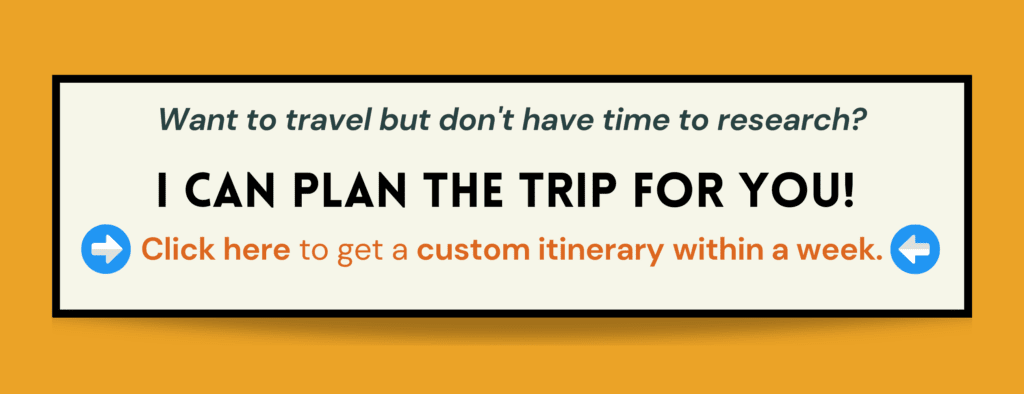Driving in Europe as an American: Documentation & Road Rules
Please note that some of the links may be affiliate links, and at no additional cost to you, I earn a small commission if you make a purchase. I recommend only products & companies I love and use, and the income goes back into making this little blog successful!
Driving in Europe as an American can be a bit of an adjustment, but it’s easy to get the hang of it quickly if you know what to expect.
This article goes into a few key differences you should be mindful of when driving in Europe, like unique road rules and having the right documentation for renting a car. Because I love road trips, I’ve rented a car in almost every country in Europe, and have zero regrets – driving is scenic, fun, and allows for deeper exploration than just sticking to major cities.
QUICK HITTERS
✔️ You will need an International Driver’s Permit to rent a car in most countries.
✔️ A few road rules change from country to country – and you’ll need to learn about roundabouts.
✔️ When I rent a car, this is what I use to compare costs – it’s the best:
▶️ DISCOVER CARS ◀️
In my opinion, Italy has the craziest drivers who sometimes don’t follow the road rules. German drivers are the best – polite and almost always following the rules. Eastern European roads are a bit more rugged – think huge potholes, more rural, with patches of dirt roads on highways, and heavy construction. And the worst traffic I’ve encountered has been in Istanbul and Napoli – worse even than LA (which says a lot).
That said, driving in Europe is pretty chill, especially outside of the big cities. Europeans tend to take their time and enjoy the scenery while driving (except the Germans because of the ‘no speed limit’ Autobahn), so don’t feel like you need to rush. Just relax, and enjoy the road trip!
Driving in Europe as an American: International Driver’s Permit (IDP)
Here is all the information you need about how to get an International Driver’s Permit.
What documents do I need to drive in Europe?
You will need a passport and your driver’s license.
For Austria, Bosnia-Herzegovina, Croatia, Greece, Hungary, Italy, Poland, Romania, Slovenia, Slovakia, or Spain, you will also need to provide an International Driver’s Permit (IDP).
How do I get an IDP in America?
As an American driving in Europe, you’ll want to get an International Driver’s Permit (IDP).
An IDP is a document that allows you to drive in other countries if you have a valid U.S. driver’s license and is essentially a translation of your driver’s license.
Before you ask, yes, I have been asked to show my IDP to pick up my rental, as well as during a traffic stop in Croatia.
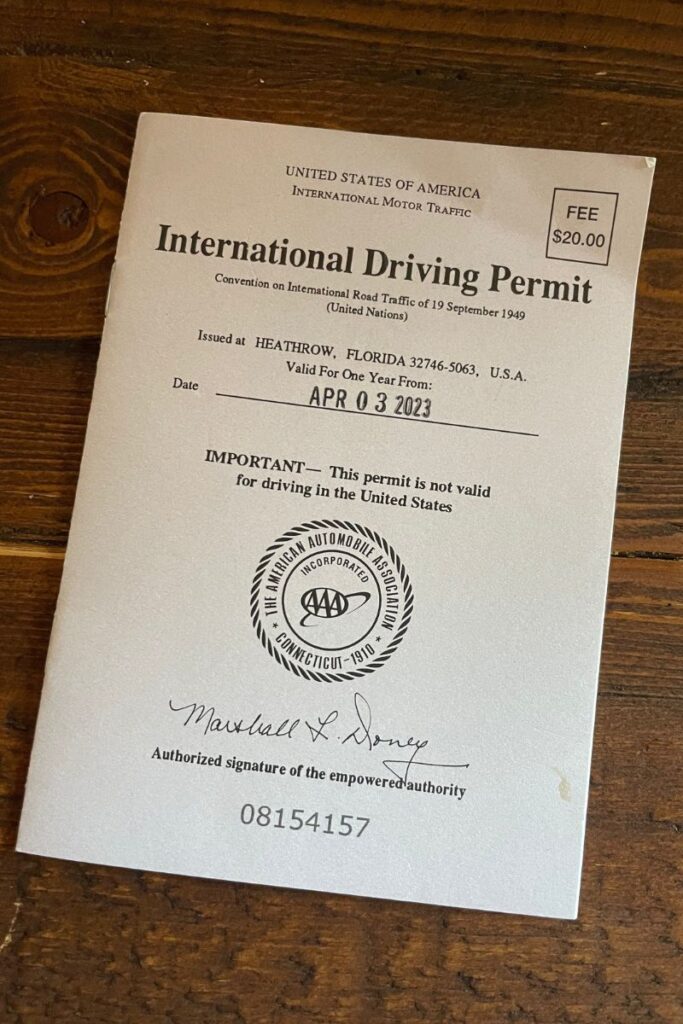
Several countries in Europe require an IDP to drive or rent a car, including Austria, Bosnia-Herzegovina, Croatia, Greece, Hungary, Italy, Poland, Romania, Slovenia, Slovakia, or Spain, so it’s a good idea to spend 30 min to get one States side before going on your adventure.
You can get an IDP from AAA or the State Department (form here) and NO, you do not need to have a AAA membership to do so. The IDP is valid for one year and must be carried with your driver’s license when you’re driving.
NOTE: Be sure to bring 2 passport-style photos with you when you apply for the IDP, a valid U.S. driver’s license, and a method of payment to cover the IDP fee (cash or credit work fine).
Just remember that an IDP is not a substitute for a driver’s license, but rather a translation of your driver’s license to aid local European police. Having an IDP can help ensure that you’re treated fairly and can help avoid any misunderstandings about your driving privileges, renting a car, etc.
How do I get an IDP in Europe?
Honestly, this is an absolute pain in the ass, so do it before you go! But if you’re in this situation for whatever reason, it’s essentially a manual mail-in process using the same form as above.
It will take 5-7 weeks for you to get something back, and you’ll need to provide a street address for delivery abroad, so make sure you have a home base.
What European countries require an IDP?
Austria, Bosnia-Herzegovina, Croatia, Greece, Hungary, Italy, Poland, Romania, Slovenia, Slovakia, or Spain require an IDP to rent a car and drive. While it’s not always consistent, I have been asked to present my IDP to rent a car in several of these countries.
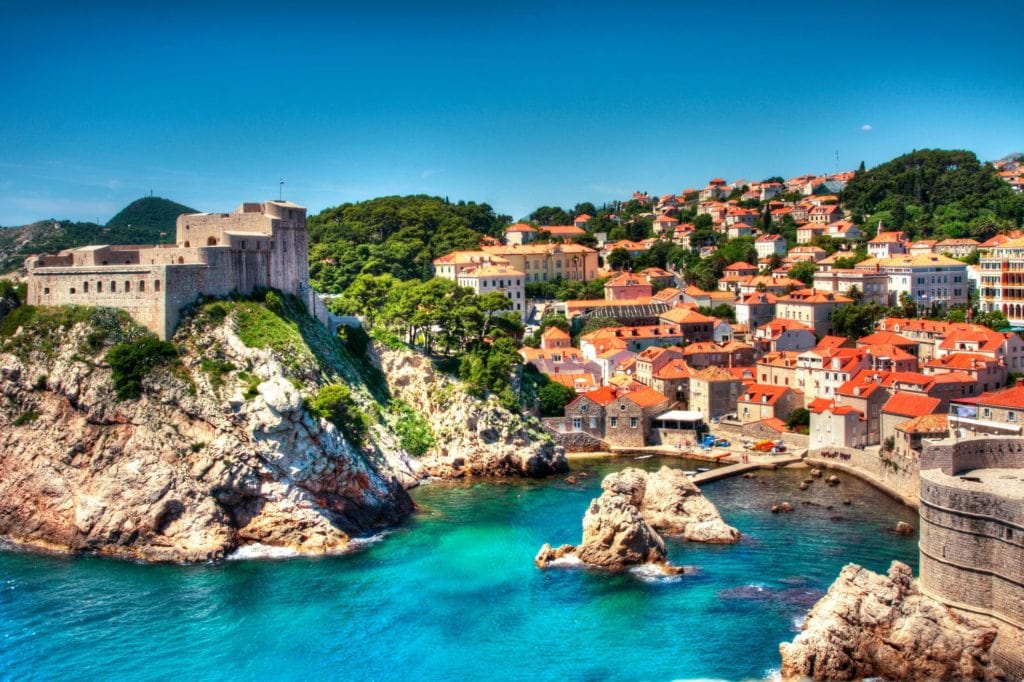
2 Week Croatia Road Trip on the Dalmatian Coast
One of my most epic road trips was along the coast of Croatia from Pula to Dubrovnik, and I definitely had to keep my wits about me while driving. IDP is required for this one!
Driving in Europe as an American: Renting a Car
Now that you have the right documentation, here are a few things to know about renting a car.
Can I rent a car in Europe with a US Driver’s License?
Yes, you will need both your passport and your driver’s license to rent a car in Europe. Additionally, for Austria, Bosnia-Herzegovina, Croatia, Greece, Hungary, Italy, Poland, Romania, Slovenia, Slovakia, or Spain, you will also need to provide an International Driver’s Permit (IDP).
This is what I personally use to check prices:
▶️ DISCOVER CARS ◀️
Can I rent a car in one country and return it in another?
Yes, but there will be a fee associated with this from the rental car company, and that will vary from country to country.
When I rented a car in Germany and went on a road trip through the Italian Dolomites and Swiss Alps, the cross-country fee was about $150.
Can I cross borders in a rental car?
Yes. And it is absolutely seamless in the Schengen countries (most of the EU). Sometimes, I barely noticed as there is only a sign or two saying “Welcome to XYZ Country”, similar to how you cross state lines in America.
There will be border control when you’re crossing in and out of countries outside of Schengen. For example, I had to wait in a queue and present my passport as I crossed into Bosnia-Herzegovina on my way to Dubrovnik. That said, just have your passport ready.
PRO TIP: You should inform your rental car company when picking up the car, as there is a rental car fee to cross borders. Because all rental cars are equipped with GPS, you don’t want to have a higher fee when you return it and they check the location log.
Are there age limits for renting a car in Europe?
If you’re over 25 years old, you’re good to go!
Minimum and maximum age limits vary by country and have fees associated with them ranging from $20-50 a day. If you’re under 21 or over 70, you may not be able to rent a car and will have to rely on other modes of public transportation – like trains, ships, metros, bikes, walking, private transfer, etc.
What do I need to know about European cars?
- European cars are generally smaller. A Ford Focus in Europe is smaller than a Ford Focus in America. This makes them easier to park!
- Be careful to check if you are renting an automatic or manual transmission. While manual transmission rentals are more prevalent and cheaper to rent, I personally have not yet learned to drive a stick shift and would be fuk’ed if I got stuck with one.
- Be careful to put the right type of fuel in your car. It’s usually written on the edge of the driver’s door as you open it, as well as on the tank. Some cars in Europe operate on Diesel.
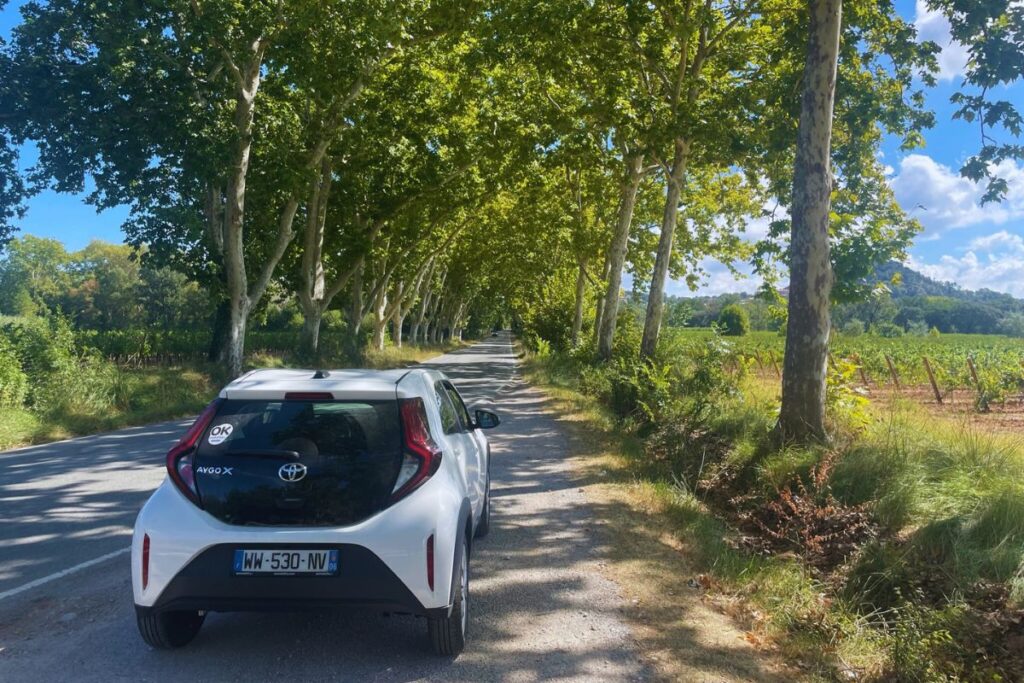
How to Drive in Europe as an American: Rules of the Road
As an American, driving in Europe can be a bit daunting because the roads are smaller, a few of the signs are different, and each country has a language you might not understand.
So here are a few rules of the road and FAQs for driving in Europe as an American to get you prepped!
Is it difficult for an American to drive in Europe?
Not really. If you prepare ahead of time and get the right documentation (IDP) and a rental car you’re comfortable with (automatic transmission), you should be fine.
Note that European roads are often narrower and more crowded than American roads, making it difficult to navigate sometimes. Additionally, signs and traffic signals may be unfamiliar or in a different language.
That said, with a little patience and practice, driving in Europe can be an enjoyable experience, and road trips are the best way to see the sights outside of big cities in Europe.

South Norway Road Trip
The best way to explore the land of Vikings and fjords is via road trip with a car or sprinter van. I spend 2 weeks exploring Oslo, Stavanger, Bergen, and all the way to Alesund and it was the best trip of my year!
Why is driving in Italy so different?
Driving in Italy is the toughest for an American compared to any other country in Europe for multiple reasons.
The lanes are fluid, chaos is visually and audibly all around you, and there are so many different types of pedestrians – from people to chickens to cows.
I have prayed more times than I’ve ever had in my life, snuck my rental car through the tiniest of streets and craziest of roundabouts (because Ubers are not always a thing in Italy) — and somehow came out the other side alive and well!
Lessons Learned: Here are common mistakes around renting a car in Italy so that you go into the beautiful country prepared and ready for epic road trips!
Can I drive in Europe with a US license?
You can drive in all the European countries with a US License. Just remember that you will need a passport to accompany your license in order to drive in all European countries. You will also need an IDP in several others listed above.
Where are the speed cameras?
OMG they are everywhere in Europe, and sometimes quite well hidden! I’ve got speed tickets sent to my house from the rental car agency months later (with images included) from Italy for going over the limit.
And bless you if you get a ticket in countries like Norway or Austria, which are notorious for slapping you with $500-700 fees.
No need to rush through the beauty that is Europe, here are 7 Ways to Pass Time on a Road Trip so you don’t feel incentivized to speed.
Where is the Autobahn?
The Autobahn is a highway where there is no speed limit, and it only exists in Germany. When you see the symbols below, specifically the “no speed limit“, this means you can go all out because the roads are constructed and engineered to make that possible.
NOTE: Even with the fast driving, I’ve always felt that German drivers are seriously among the best in the world. Polite, no surprises, focused on the road (no texting). Danke! 💙
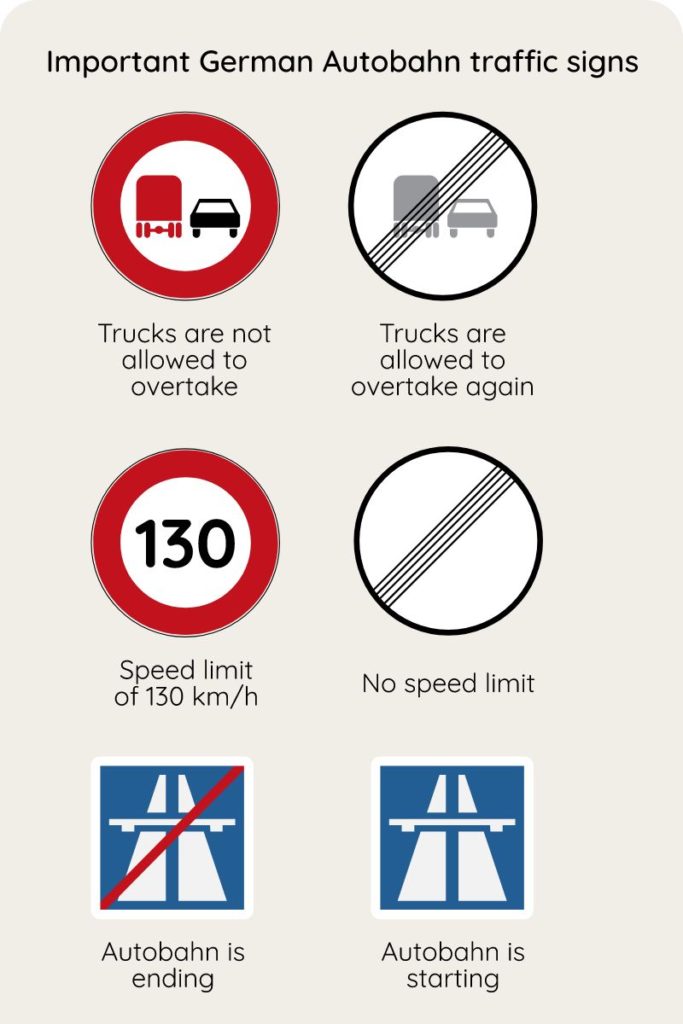
A few things to keep in mind:
- The far-left lane is for maximum speed only and passing. DO NOT stay on this lane unless you’re the fastest mofo on the road or passing someone. If the guy behind you has to break because you have not gotten out of the fast lane fast enough, that’s considered poor driving.
- Careful of speed traps on the Autobahn, where the NO SPEED LIMIT suddenly goes to 120 KM/H Speed Limit, then back to No Speed Limit.
- I usually sit in the middle lane or the far right lane and go as fast as I feel comfortable, occasionally putting the pedal to the metal and passing on the far left lane. But then I move back to the left lanes to cruise along at a slower pace.
How do I pay tolls in Europe?
Everywhere in Europe, tolls are just like in the States, and you can pay with a credit card if you don’t have cash.
Some of the time, your rental car is equipped with an automatic toll reader, which accrues your tolls along the journey, and the total paid at the end when you hand in your car. This is especially true in the northern European countries where infrastructure is more advanced.
I was pleasantly surprised that Norway was seamless from road tolls to ferry boat tolls.
What’s with all the Roundabouts?
If you’re driving in Europe, you’re bound to encounter a roundabout. These little traffic circles are a common sight, and they can be a bit confusing for American drivers. After all, we’re used to stoplights and four-way intersections!
Roundabouts may seem strange at first, but they’re actually a very efficient way to move traffic. And once you get the hang of them, driving in them will be a breeze!
Here are a few tips for driving in a roundabout:
- Yield to traffic already in the circle.
- Enter the circle from the right lane.
- Drive counterclockwise around the circle until you reach your exit.
- Use your turn signal when you exit the circle.
Any tips for refueling your rental car?
Driving in Europe as an American, there are a few things you’ll need to know about refueling your vehicle.
👉 PRO TIP: It’s usually written on the edge of the driver’s door as you open it, as well as on the tank.
- In most European countries, gas is sold by the liter rather than the gallon. This can be a bit confusing for Americans, but there are a few easy conversion tricks you can use. Just remember that there are approximately 3.8 liters in 1 gallon. So if you’re used to paying $7 per gallon, you’ll be paying approximately $2 per liter.
- I was driving through Croatia on my first road trip through Europe and realized I had no idea how to pay at a gas station. In America, you just swipe your card at the pump and you’re all set. But in Europe, you have to go into the station to pay first, and then you can go back to the pump and fill up your tank. It’s a small difference, but it’s one that can trip up even the most experienced traveler.
- Don’t forget to pay attention to the different types of fuel available. Most American cars require unleaded gasoline, but you’ll also find diesel and LPG options in Europe. Make sure you know what type of fuel your car takes before you start driving.
Where do I park?
In all my road trip adventures, I’ve become an expert at parking in Europe (as well as paying parking tickets in most countries), so here’s all my wisdom so you don’t make the same mistakes:
- EasyPark App: A great app for being able to manage your parking meter remotely. Helped out a lot when driving in France and Italy.
- Seety App: Great for visualizing the different parking zones in a city, finding free parking zones, as well as the cost of each parking zone. Especially useful in the city.
- Old Towns in any European city are almost all parking-free zones unless you’re a local. Park outside of Old Towns unless you want crazy tickets – and trust me, there are cameras all around taking note of incoming and outgoing cars.
- If you get a parking ticket, you can use Google Translate to decipher the payment instructions. Usually, you can pay online, with a discounted price if you take care of it quickly. If not, you can look for the closest Post Office, where some parking tickets can also be paid for (especially in southern European countries like Italy and Croatia.)
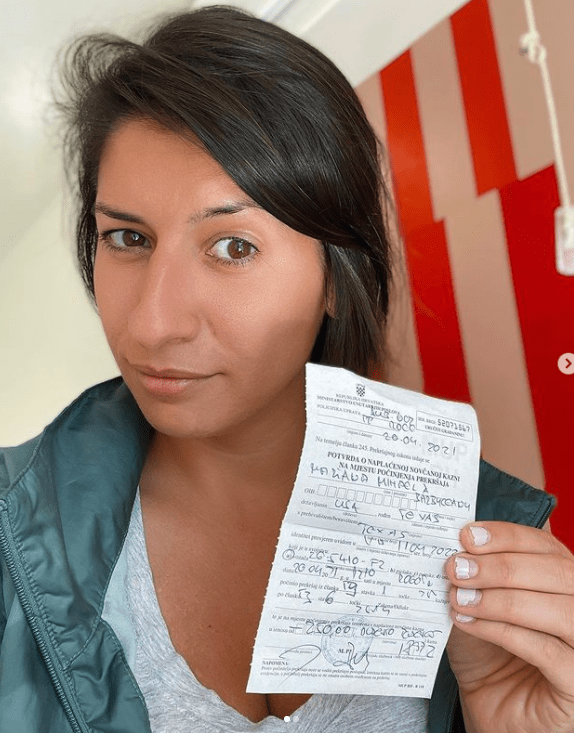
Is It Worth It To Drive In Europe?
Driving in Europe can be an incredibly rewarding experience, and I recommend it. There are some pros and cons to think through before you decide for yourself:
✅ Pros:
- Flexibility: Having your own rental car allows you to set your own schedule, make spontaneous detours, and stop whenever a breathtaking view catches your eye.
- Access to Remote Locations: Driving can take you to off-the-beaten-path destinations—quaint villages, secluded beaches, and gorgeous rural landscapes—that public transportation can’t always reach.
- Scenic Routes: Europe is home to some of the most beautiful driving routes in the world, from the Amalfi Coast in Italy to the iconic serpentine routes of Madeira.
❌ Cons:
- Stress: Navigating unfamiliar roads and driving customs can be stressful, and traffic in cities can be intense.
- Parking: In many European cities, parking works a bit different – usually located outside of historic old towns, and almost always paid.
Despite the cons, the pros of driving in Europe often outweigh them, particularly adventurous at heart.
There’s a simple joy in navigating Europe’s iconic serpentine roads, steering away from the well-trodden paths of famous cities, and venturing into the mountains, villages, and rural areas. Here, I will argue, lies the more authentic Europe.
The ability to explore these areas at your own pace, with the windows down, your favorite tunes playing, and the European landscape unfolding before you, is an experience that truly embodies the spirit of road-tripping.
So, yes, driving in Europe is worth it.
Conclusion: Can Americans Drive in Europe?
Absolutely, Americans can drive in Europe, but there are a few key points to keep in mind to make sure you have a smooth trip.
✔️ License and Documentation:
First things first, your U.S. driver’s license is valid in most European countries for short visits (usually up to 90 days).
However, it’s highly recommended to get an International Driving Permit (IDP), which is an official translation of your license and is recognized in over 150 countries. You can easily obtain an IDP through the American Automobile Association (AAA) or the American Automobile Touring Alliance (AATA) before you leave the States.
✔️ Understanding the Rules:
European traffic rules can differ from those in the U.S.
For instance, in countries like the UK and Ireland, you’ll be driving on the left side of the road, which can be disorienting at first. While I usually take public transportation in the UK, there are so any places where a car really is a must to explore.
Speed limits are also usually posted in kilometers per hour (km/h), and they can change frequently, especially when entering and exiting city/village areas.
✔️ Insurance and Rental Cars:
If you’re renting a car, insurance is a must – get that as part of your rental contract. Also, manual transmissions are more common in Europe, so if you’re not comfortable with a stick shift, be sure to request an automatic one when booking your rental.
✔️ Tolls:
Many European countries have toll roads, and the fees are steeper than in the US, and can add up quickly. That said, almost all the tolls I’ve been to in east and west Europe can be paid with card.
✔️ Parking and City Driving:
Cities can be challenging with narrow streets and limited parking. Be aware of restricted traffic zones, often found in historic city centers, which can carry hefty fines for unauthorized driving. I have gotten multiple tickets in little Italian towns for driving through without knowing it was not allowed.
✔️ Fuel Considerations:
Gas stations in rural areas may not be as plentiful as you’re used to, and they often close early (around 8 p.m.).
Plan your refueling stops by searching on Google Maps, remember that fuel is sold by the liter, not the gallon, and that your rental car will have a little note on the gas tank regarding which fuel you need to pump.
✔️ Adapting to Local Customs:
Each country has its own driving culture. For example, in some places, flashing headlights is a signal to get the heck out of the way into the slower lanes. Be observant, adaptable, and always courteous – leave the road rage at home, you’re on vacation!
European driving can be insane, especially with the added excitement of new sights and experiences. Take breaks, enjoy the scenery, and don’t rush—after all, the journey is just as important as the destination.
Remember, driving in Europe is not just about getting from point A to B; it’s an adventure that can take you through some of the world’s most stunning landscapes and into the heart of its most vibrant cultures.

